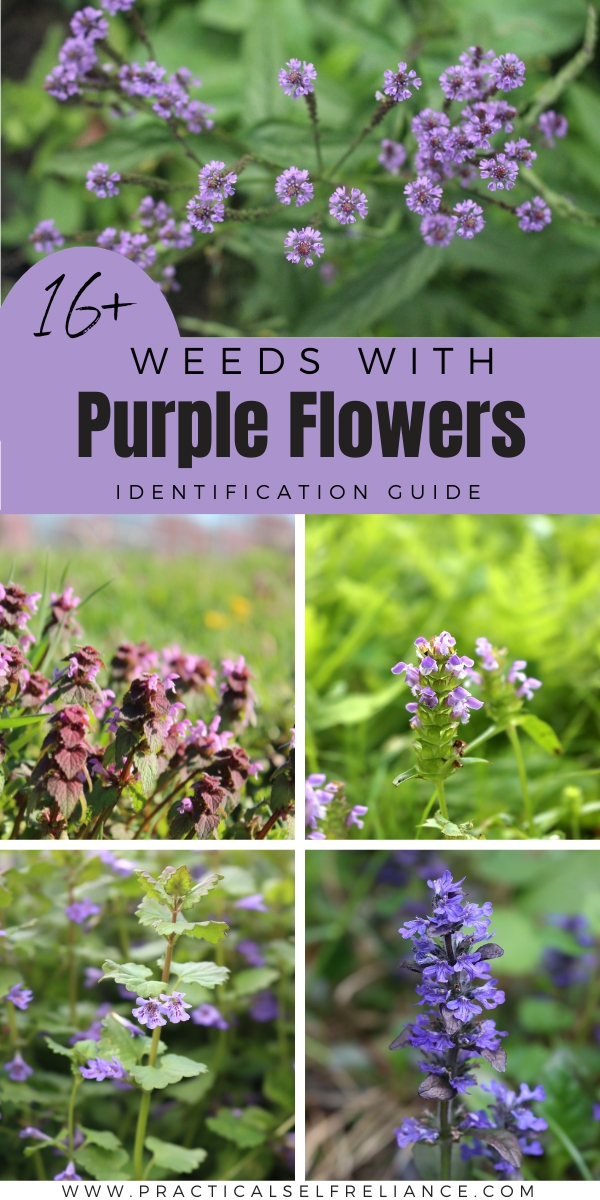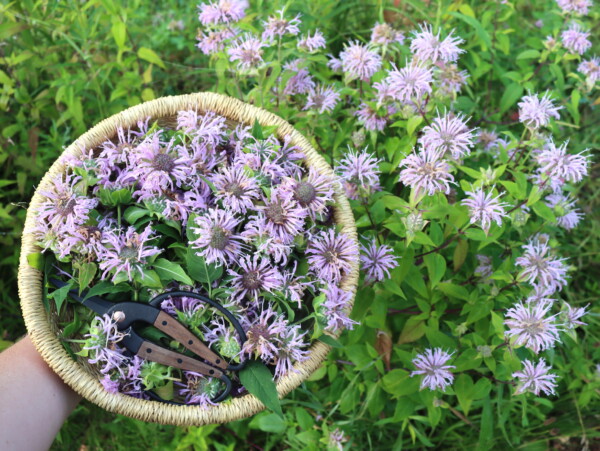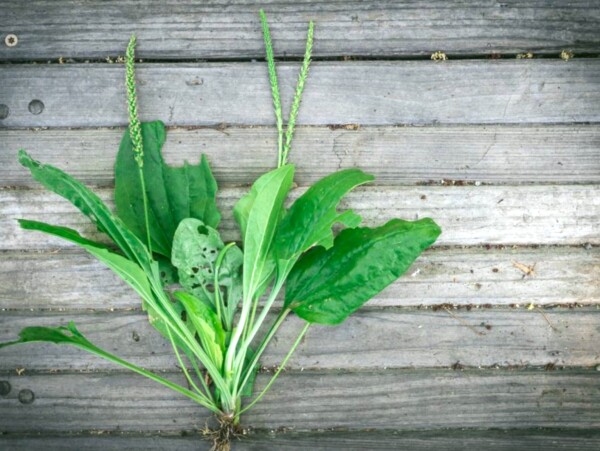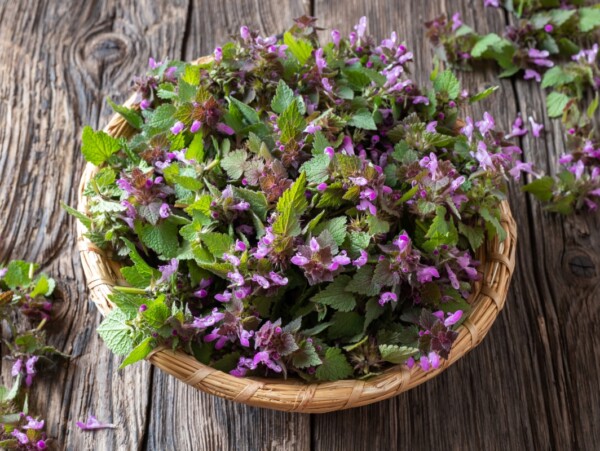Affiliate disclosure: This post may contain affiliate links. Please see our Privacy Policy.
Weeds with purple flowers are incredibly common, largely because they’re popular with the bees and bring all the pollinators to the yard. Many of these low-growing purple-flowered weeds are edible, and even medicinal, but a few are toxic.

Table of Contents
- Weeds with Purple Flowers
- Blue Vervain (Verbena hastata)
- Bugleweed (Ajuga sp.)
- Bull Thistle (Cirsium vulgare)
- Canada Thistle (Cirsium arvense)
- Chives (Allium schoenoprasum)
- Comfrey (Symphytum officinale)
- Dove’s-Foot Geranium (Geranium molle)
- Fireweed (Chamaenerion angustifolium)
- Ground Ivy (Glechoma hederacea)
- Heal-All (Prunella vulgaris)
- Henbit (Lamium amplexicaule)
- Nightshade (Solanum sp.)
- Purple Dead Nettle (Lamium purpureum)
- Purple Loosestrife (Lythrum salicaria)
- Spotted Knapweed (Centaurea maculosa)
- Violet Wood Sorrel (Oxalis violacea)
- Wild Violet (Viola sp.)
- Edible Wild Weeds
- Foraging Guides
If you’re walking around your yard and you spot a patch of purple flowers in the grass, you’re not alone. Small, low-growing purple-flowered weeds are incredibly common, and as a forager, I’m constantly being asked to identify purple-flowered weeds.
There are just so many purple-flowered weeds, especially low-growing plants with exceptionally tiny purple flowers.
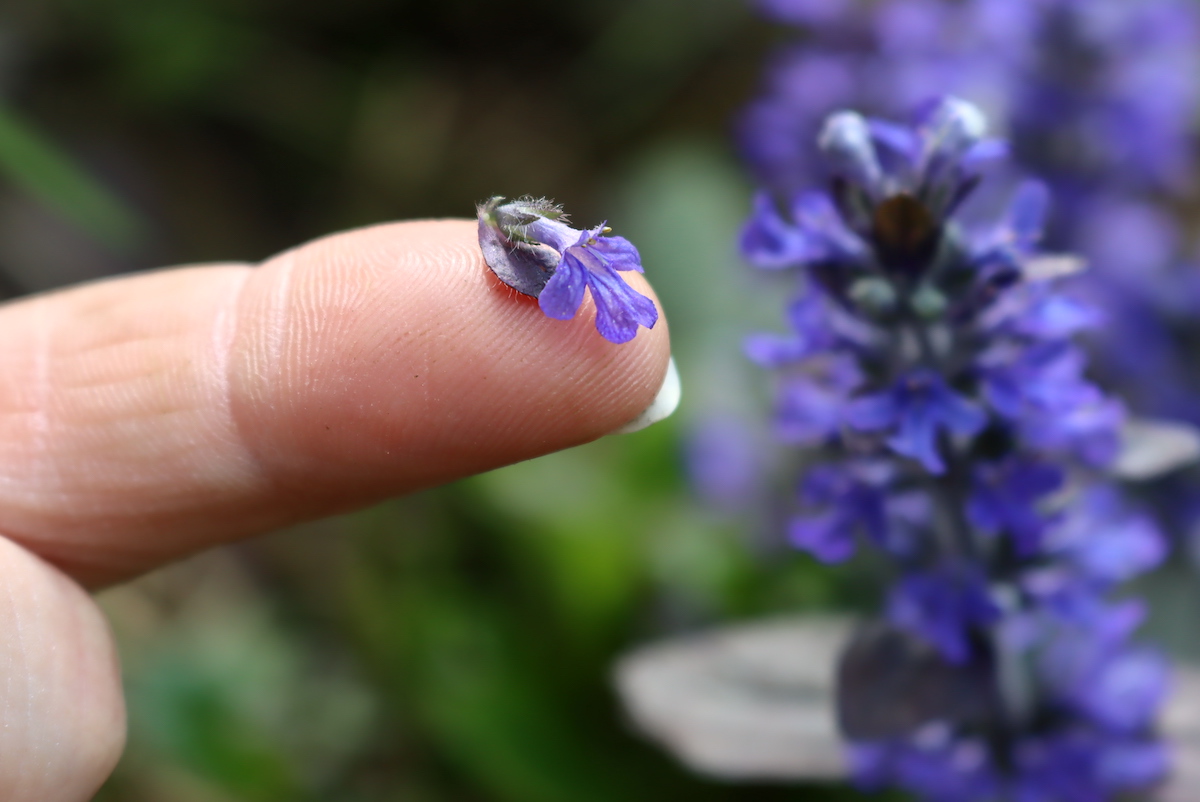
Purple flowers are especially attractive to pollinators, so there’s a good reason that there are so many purple-flowered weeds.
The flowers that attract the most pollinators make the most seeds, after all, and purple flowered weeds are especially prolific.
Many of these plants are also spread by runners, and also don’t seem to mind being mowed.
The good news is, the bees love them, and most purple-flowered weeds are not only edible, they’re also often medicinal. These same that we now look at as common lawn weeds were once treasured by people that harvested their food and medicine in the wild. Those same purple flowers that drew your eye also drew the eye of hungry people a millennia ago.
Some purple-flowered weeds are toxic, most notably nightshade, so make sure you properly identify the plant before using it.
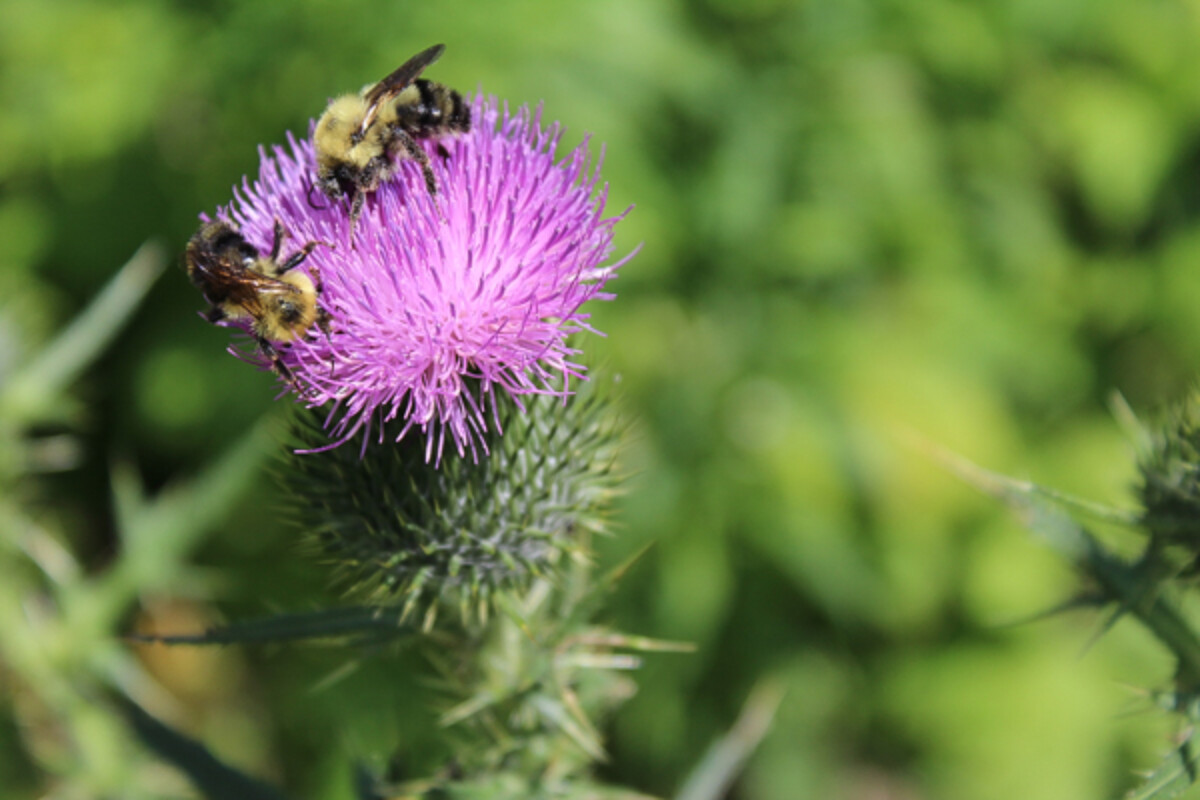
Weeds with Purple Flowers
These are some of the most common wild weeds with purple flowers. Most you’ll spot as tiny purple flowers in the grass, and they’re generally low-growing. They tend to have soft stems and make their home in moist, fertile spots on the lawn.
Some, however, grow quite tall, like the thistles, which can be up to 6 feet tall with large spikes.
As you might imagine, many are invasive, but not all of them. Some are perfectly harmless and stunningly beautiful little purple flowers that will add a splash of color to your lawn, even if most people call them “weeds.”
Blue Vervain (Verbena hastata)
While the name says “blue,” the flowers of blue vervain are actually purple or violet. The plants grow about 2 to 3 feet tall and send up stunning flower spikes with tiny purple flowers.
These tend to grow at the shady edges of fields, especially in places with consistent moisture. The
Blue vervain is an incredibly valuable medicinal flower used to treat anxiety, depression, and insomnia, along with dozens of other traditional uses for everything from fever to snakebite. It’s still used as a treatment for pokeweed berry poisoning.
While every part of the plant is edible, the seeds are the best food source and were historically ground into a flour substitute.
Here is how to identify Blue Vervain (Verbena hastata).
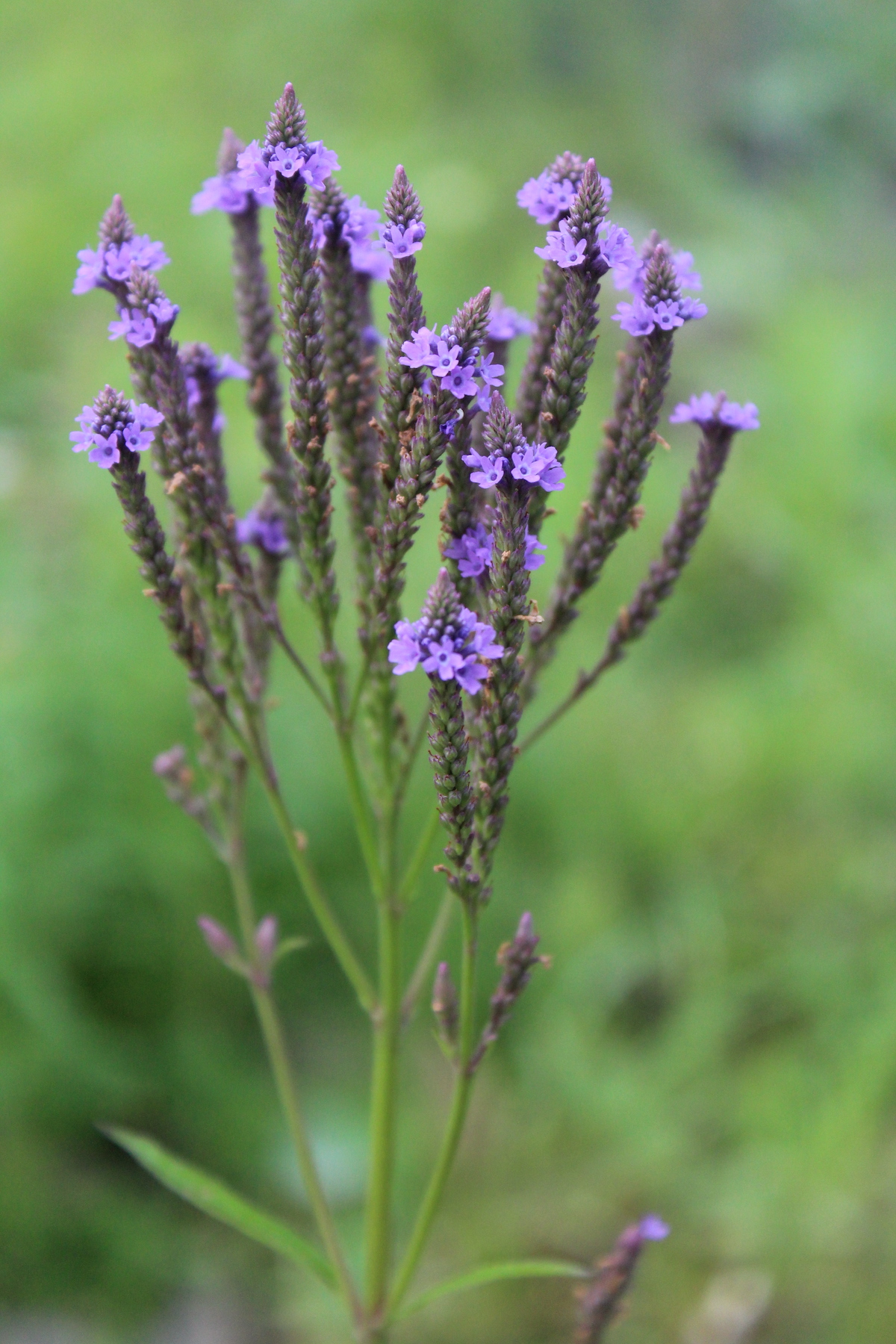
Bugleweed (Ajuga sp.)
This low-growing lawn weed with purple flowers is known by many names, including Bugleweed, Bugle, Blue Bugle, Sweet Bugle, Common Bugle, Carpet Bugleweed, Carpetweed, Carpenter’s Herb, gypsy Weed, Gypsywort, Wolf’s Mint (Menta de Lobo), Green Wolf’s Foot and occasionally the St. Lawrence Plant.
They say a well-loved child has many names, and the sheer number of common names speaks to this wild weed’s uses worldwide. It’s sometimes used in salves to treat minor injuries, but it’s most commonly used to balance hormones, namely thyroid imbalances.
Here is how to identify Bugleweed (Ajuga sp.).
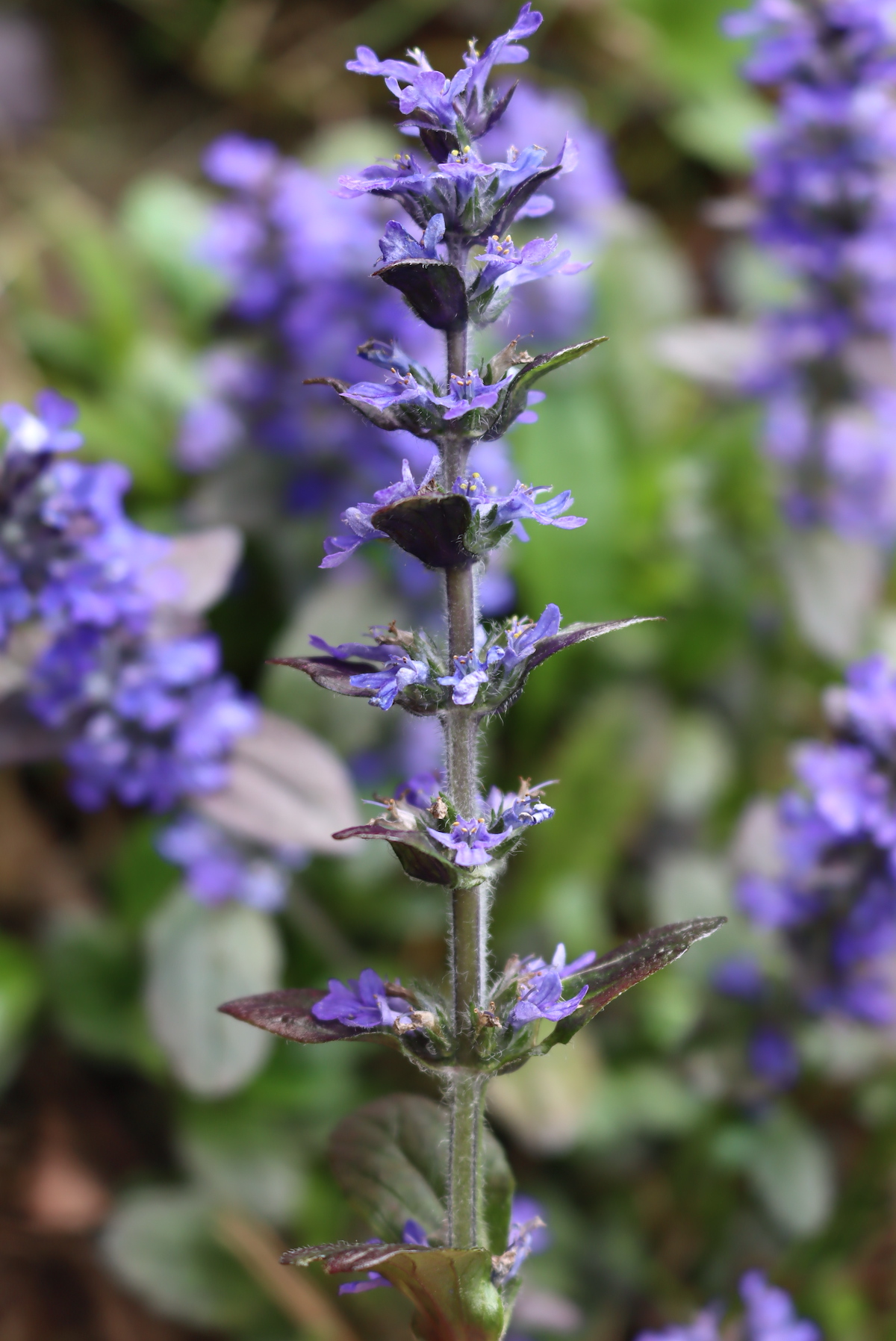
Bull Thistle (Cirsium vulgare)
You’d be hard-pressed to find someone who loves bull thistle, besides the bees. Step on this plant once wearing sandles and you know what I mean.
It can grow in lawns, where it’ll spread out flat as a rosette to avoid mowing. When you see the purple flowers, however, it’s usually sent up a tall flower spike that’s 3 to 6 feet in height.
Every part is edible, including the root, stalk, leaves and flowers…provided you’re brave enough to remove the spines.
Here’s how to identify bull thistle and ways to eat it.

Canada Thistle (Cirsium arvense)
Also known as Creeping thistle, this spiny plant is incredibly invasive, and nearly impossible to irradicate. When mowed, it’ll hunker down into a spiny rosette, just waiting for a period of neglect where it can send up a flower spike full of fluffy purple flowers.
The flowers are very popular with the bees, but once pollinated, they can send out thousands of airborne seeds. Even a single flower can plant a whole field with Canada thistle.
While they’re very spikey, they also happen to be edible.
Here’s how to identify Canada Thistle (Cirsium arvense).
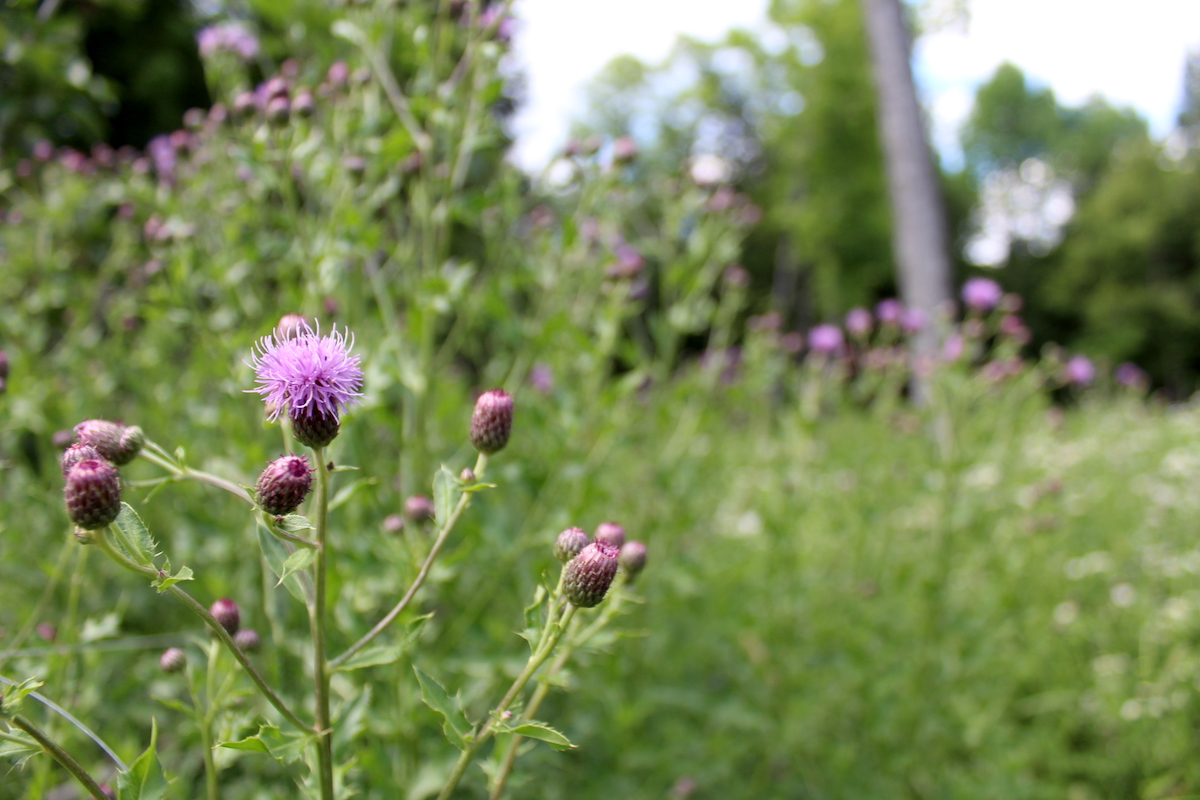
Chives (Allium schoenoprasum)
I know a lot of you are thinking that chives are not a “weed” and that’s partially true. Many people do grow chives in their gardens, but they also often escape cultivation and take up residence in fields and lawns.
Walking across a hayfield right after we moved to Vermont, I came across multiple patches of chives, all thriving in the wild. Later that summer, I had a job as a nanny, and the young children I was watching loved to harvest wild chives in their backyard for their spicy flowers. They had no idea what they were eating, but they harvested those wild purple flowers with enthusiasm.
I’ve seen wild patches of chives growing in dozens of locations, taking up residence like a weed. I’ve even had people email me to ask me if I could help them identify this strange purple-flowered weed they found.
Chives are edible and usually harvested for their greens, which are most commonly used on top of baked potatoes in the US. You can also make all manner of things with their spicy purple flowers, like chive blossom vinegar and even savory chive blossom jelly.
There are many types of chives, and here’s how to identify chives to figure out which type you’ve stumbled upon.
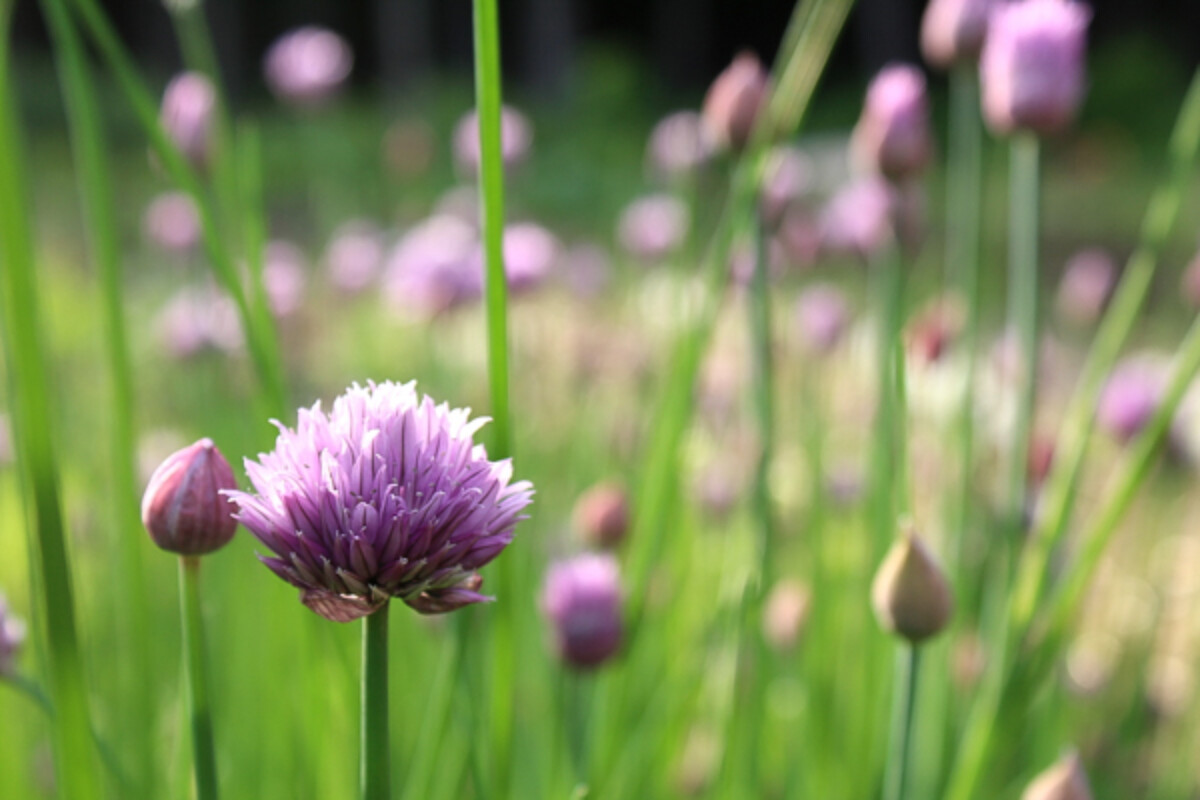
Comfrey (Symphytum officinale)
Well known in permaculture circles, comfrey is commonly used to attract pollinators and improve soils. It’s what’s known as a “green manure” and it’s chopped regularly to add to the compost for more organic matter.
The problem is, comfrey is incredibly invasive and nealry impossible to irradicate once established. Even a small part of the root left in the soil will grow a whole new plant.
We have an island in the middle of our pond that we’ve dubbed “comfrey island” and every time we dig up a comfrey plant in the garden, it goes there. (We would compost the roots…but they can live through composting, and then you plant them again when you apply the compost.)
Luckily, the bees love comfrey, and it’s medicinal. If you have lots of comfrey around, consider making a medicinal comfrey salve.
Here’s how to identify comfrey.
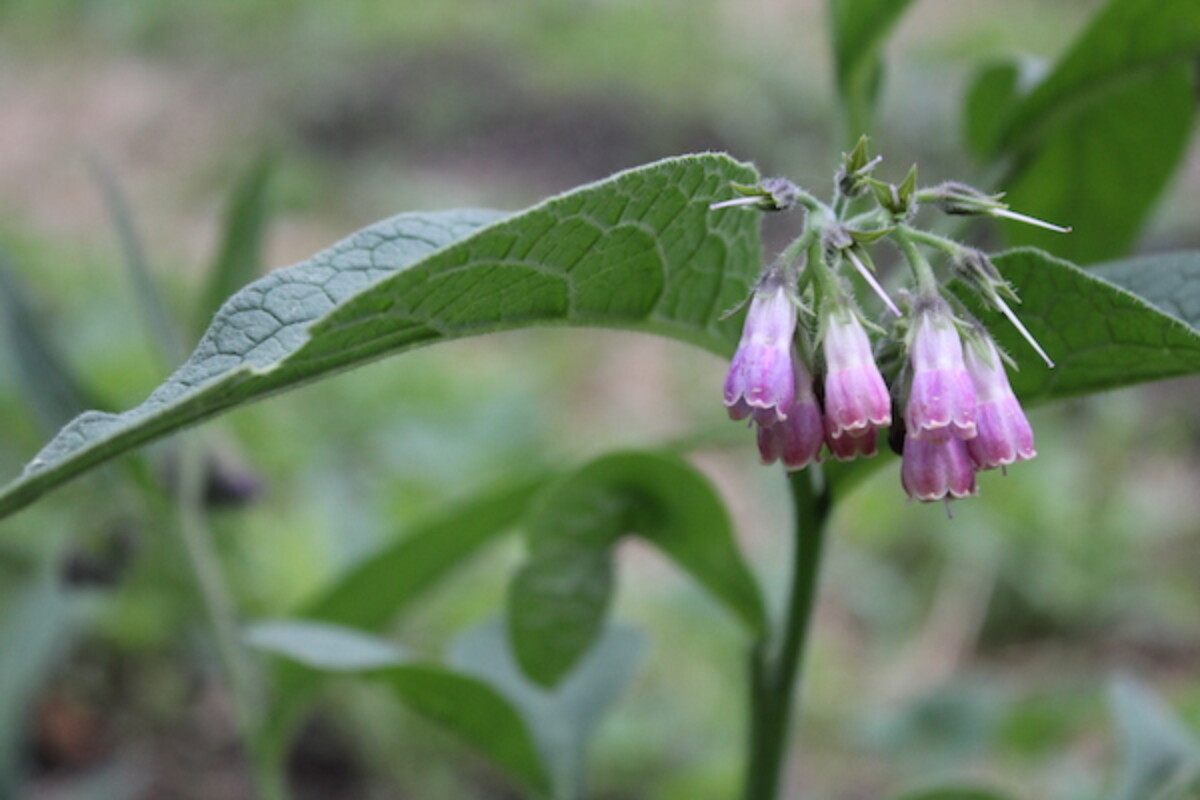
Dove’s-Foot Geranium (Geranium molle)
Also known as doves food cranebill, or sometimes wild geranium, this is one downright beautiful weed. Honestly, if you find it in your flower beds, most people would assume it was intentionally planted.
We found it in ours, and I assumed the previous owners planted it. Maybe they did.
Just because something is a weed and spreads wildly doesn’t mean it’s not beautiful.
Here’s how to identify Dove’s Food Geranium (Geranium molle).
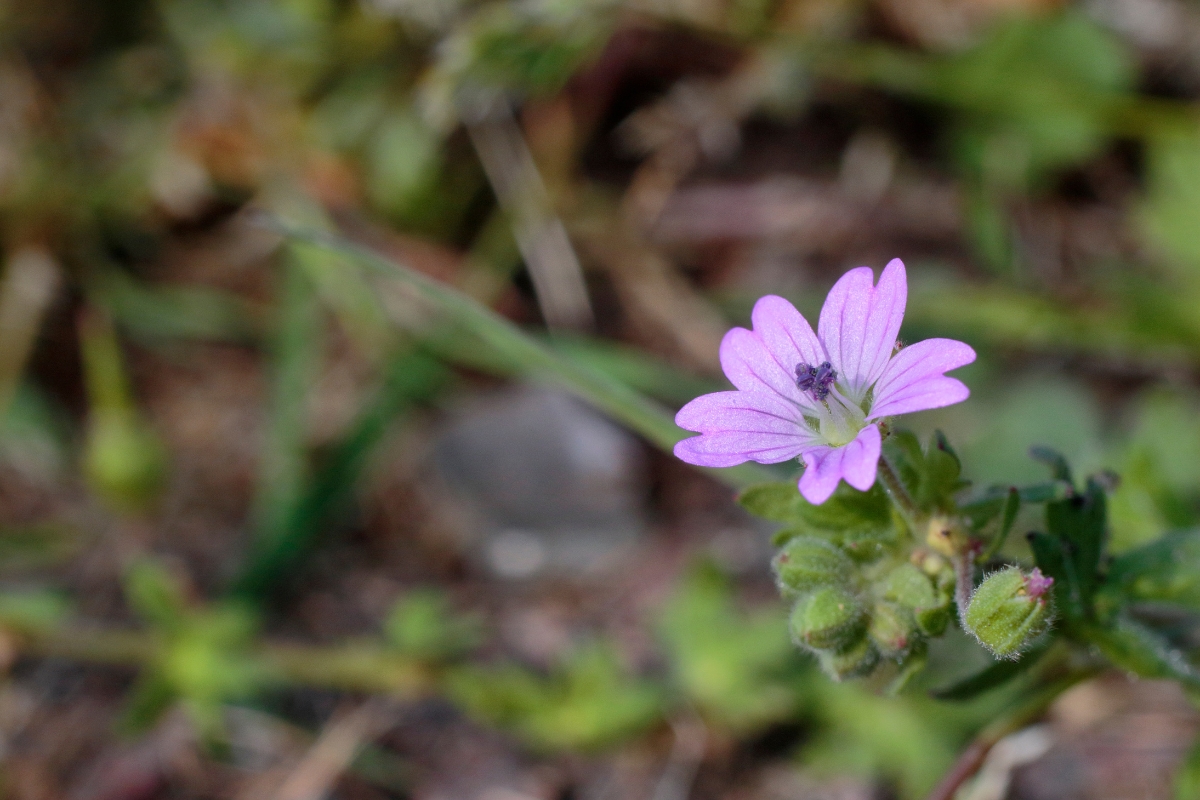
Fireweed (Chamaenerion angustifolium)
Also known as rosebay willowherb, fireweed is a primary succession plant that takes over after fires, floods or other disturbances.
In Alaska, it’s said that they track the progress of the summer by the blossoms progress up the stalk. When they reach the top, summer’s pretty much over, and winter’s not far off.
Every part of fireweed is edible and medicinal. The leaves are made into a tea substitute known as Ivan Chai, and the flowers are used to make fireweed jelly.
Here’s how to identify fireweed.
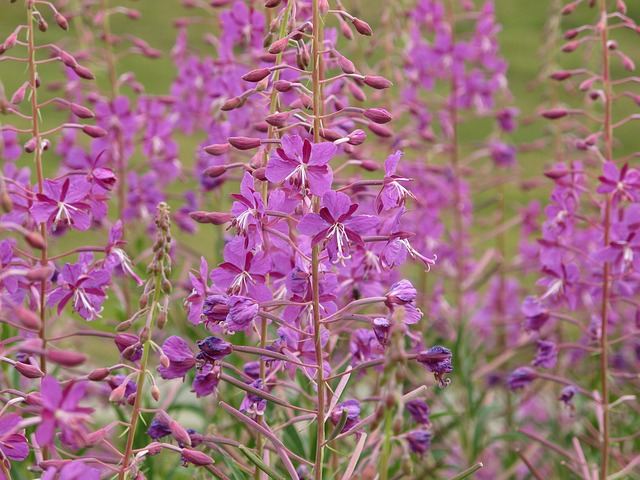
Ground Ivy (Glechoma hederacea)
Also known as creeping Charlie and Ale Hoof, ground ivy has been used for centuries as both food and medicine. Its name “ale hoof” refers to its use in beer brewing before hops became common. (The leaves have a hoof shape, so that’s where the “hoof” comes from.)
This is one of the most common lawn weeds with purple flowers, and it tends to take over areas with good fertility and consistent moisture.
Here’s how to identify ground ivy.
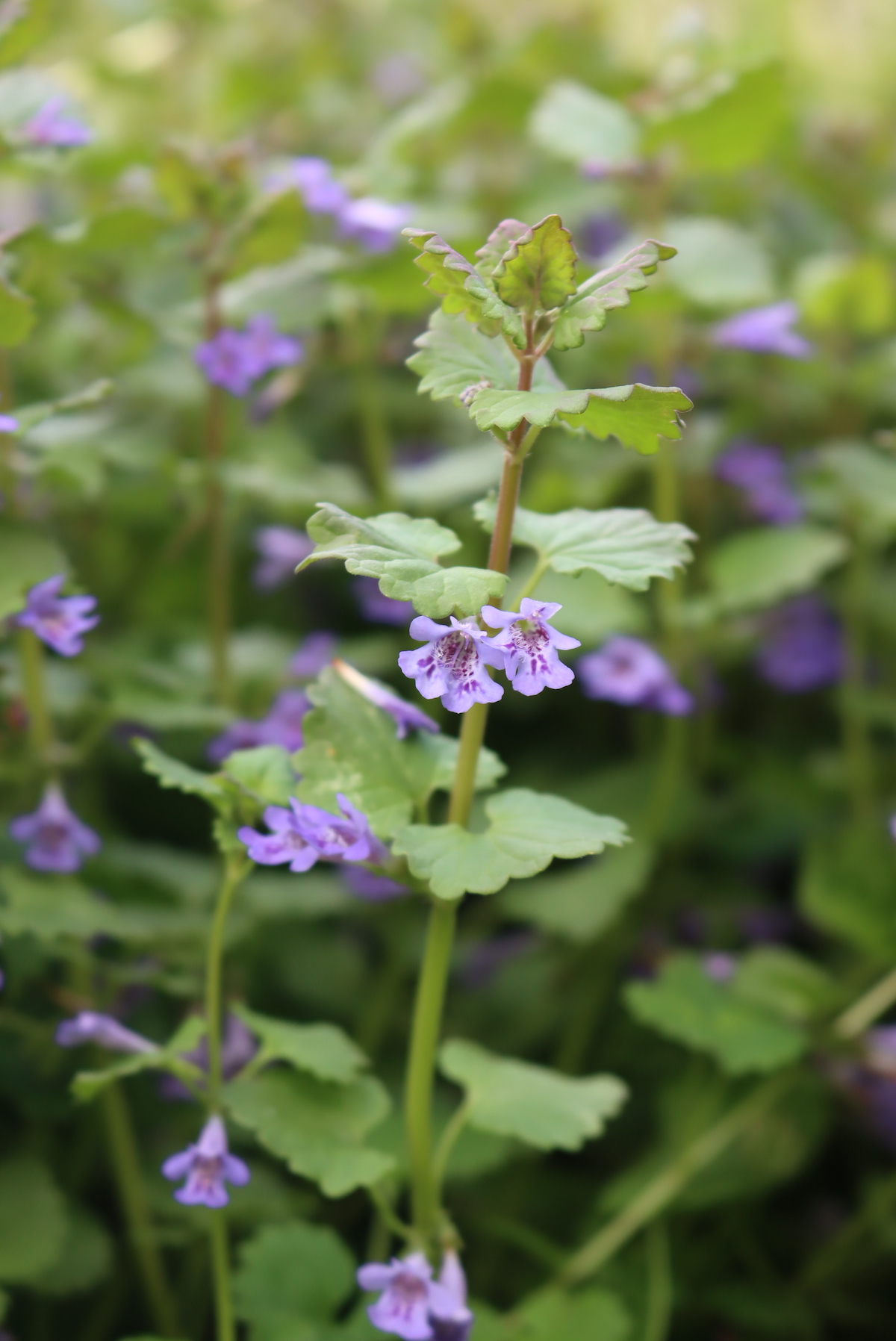
Heal-All (Prunella vulgaris)
With a name like heal all, there’s something special about this low-growing weed with purple flowers.
It’s been used medicinally by cultures all over the world, and as you guessed, it’s reputed to heal almost everything.
Here’s how to identify Heal-All (Prunella vulgaris).
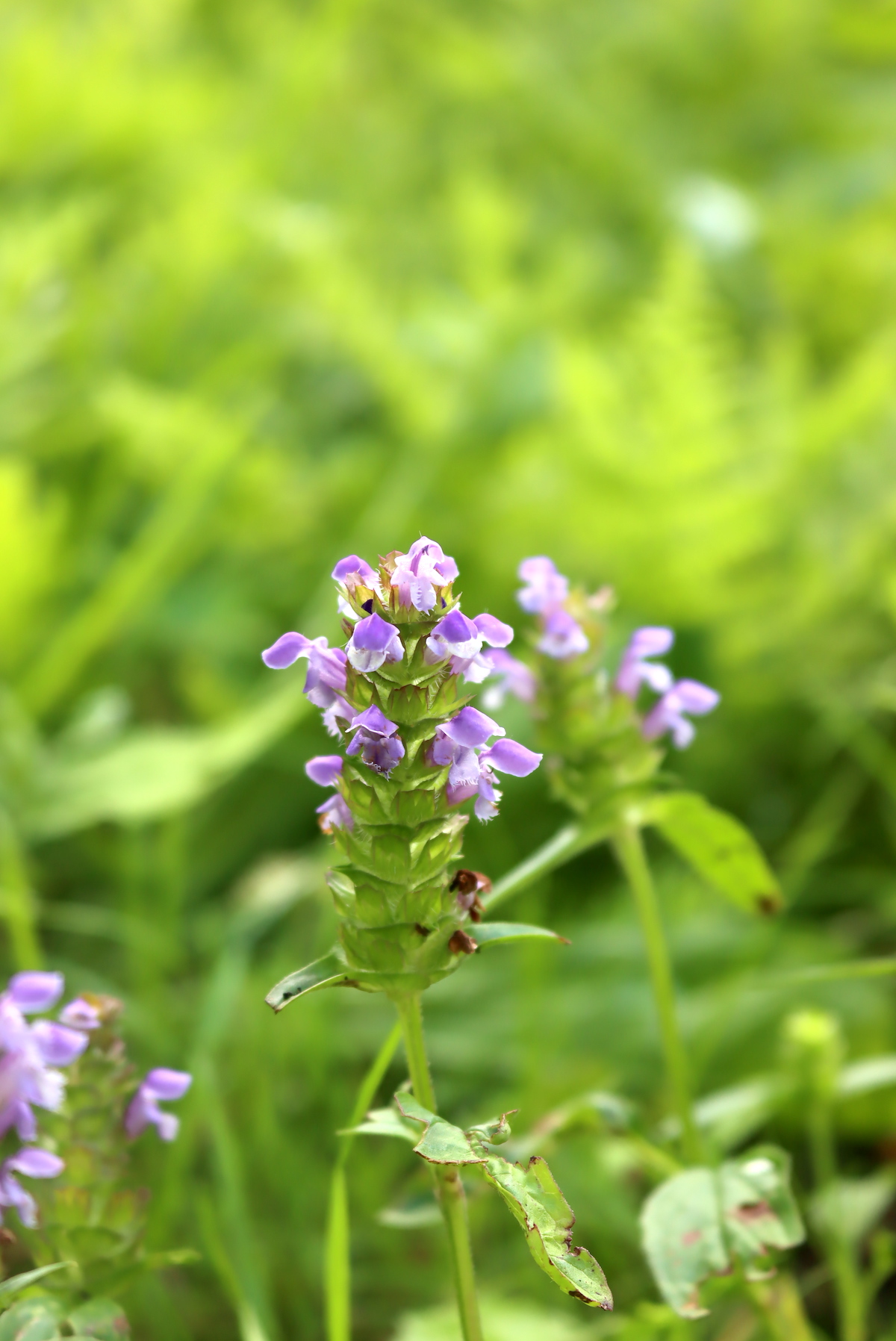
Henbit (Lamium amplexicaule)
Also known as henbit deadnettle, this low-growing weed in the mint family has purple to pink flowers and some small spines.
It’s commonly confused with purple dead nettle, but they’re both edible (and medicinal).
Here’s how to identify Henbit (Lamium amplexicaule).
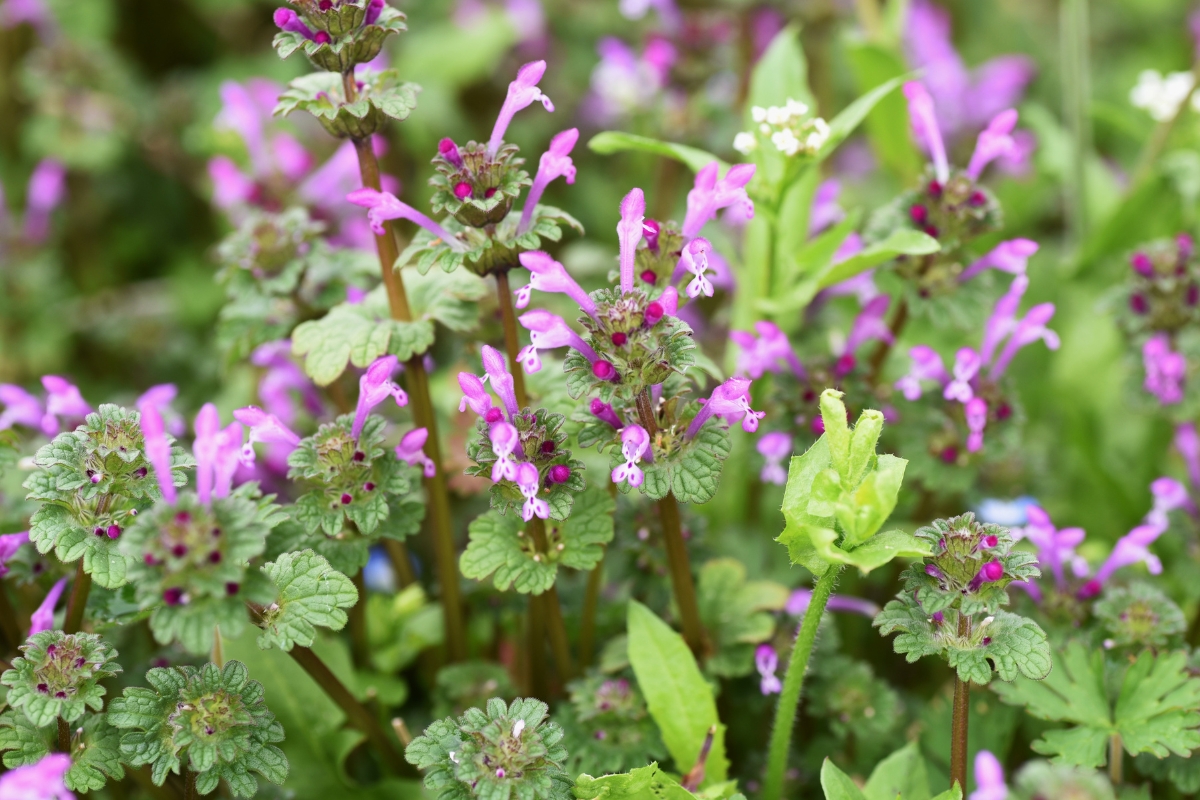
Nightshade (Solanum sp.)
Many different species of nightshade have small purple flowers with five petals, including Black Nightshade (Solanum nigrum) and Bittersweet Nightshade (Solanum dulcamara). Most wild plants in the nightshade family are toxic, and many are invasive.
While children don’t tend to eat nightshade leaves or flowers, you do really have to be careful with those tiny purple flowers that will turn into poisonous fruits that are attractive to tiny toddler hands.
There are edible species of nightshade, but most have been brought into cultivation (tomatoes, eggplant, etc.). There are also a few edible wild species, but even as an experienced forager, I don’t mess around with these. Too much opportunity for confusion.
Here’s how to identify nightshade (Solanum sp.).
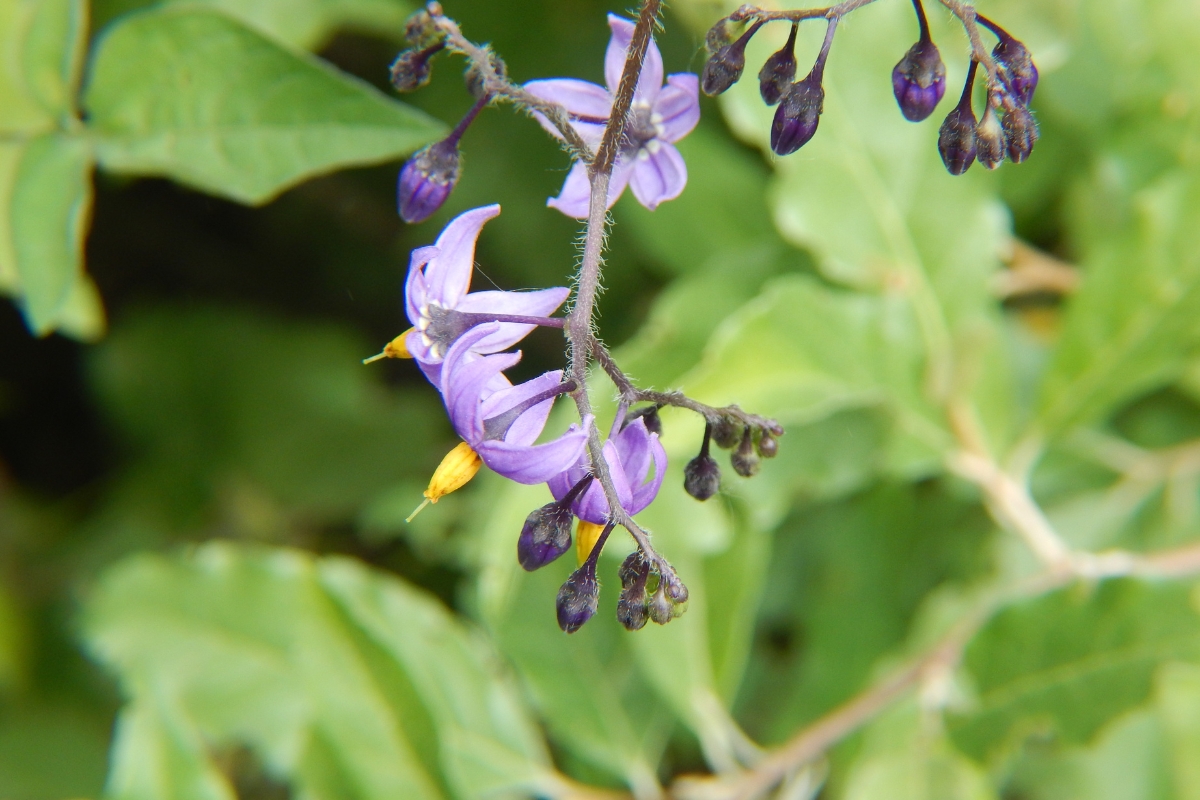
Purple Dead Nettle (Lamium purpureum)
Almost as common as dandelions in some parts of the country, purple dead nettle can take over vast areas of lawn quickly.
The name “dead nettle” refers to the fact that it doesn’t have a sting (unlike very painful stinging nettle).
It’s edible and medicinal, and the leaves are used in salves to stop bleeding.
Here’s how to identify purple dead nettle.
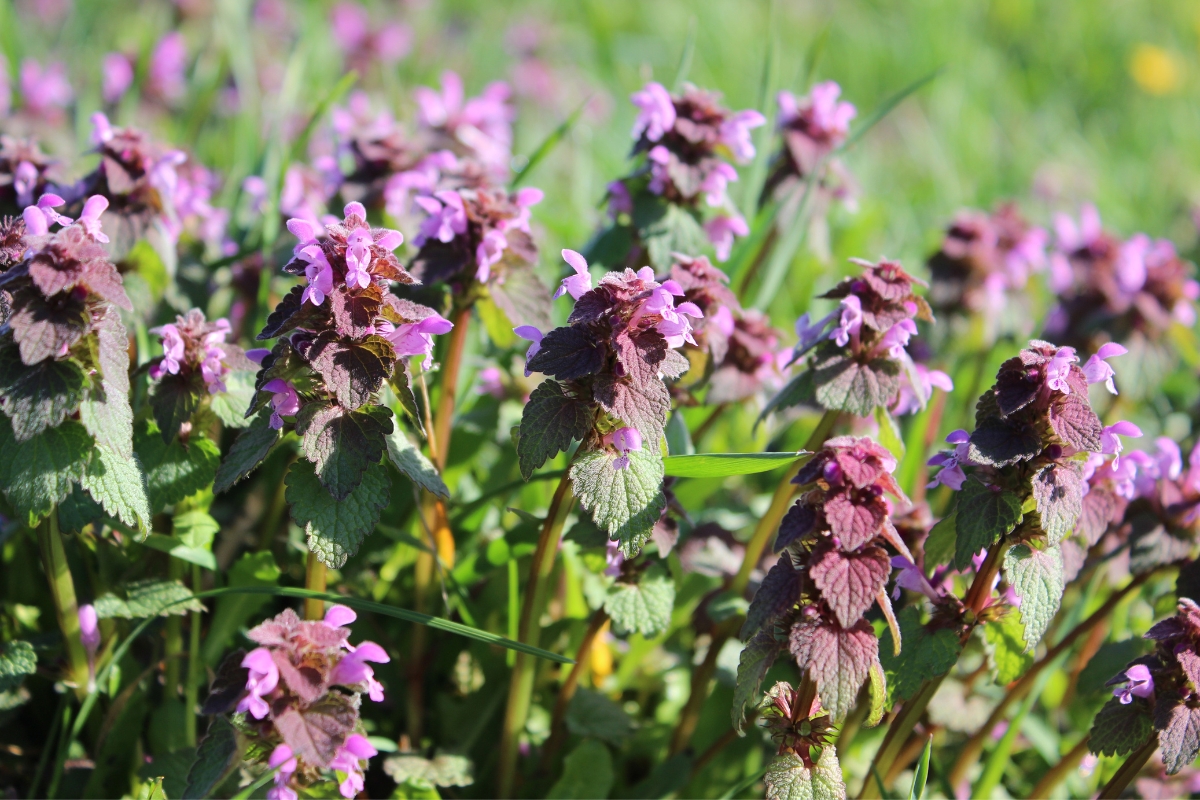
Purple Loosestrife (Lythrum salicaria)
A common invasive field weed, purple loosestrife has spikes of stunning purple to pink flowers.
Every part of the plant is edible, though it’s not commonly eaten. It’s sometimes confused with other weeds with purple flowers, namely Blue Vervain and fireweed, both of which are discussed above.
Here’s how to identify Purple Loosestrife.
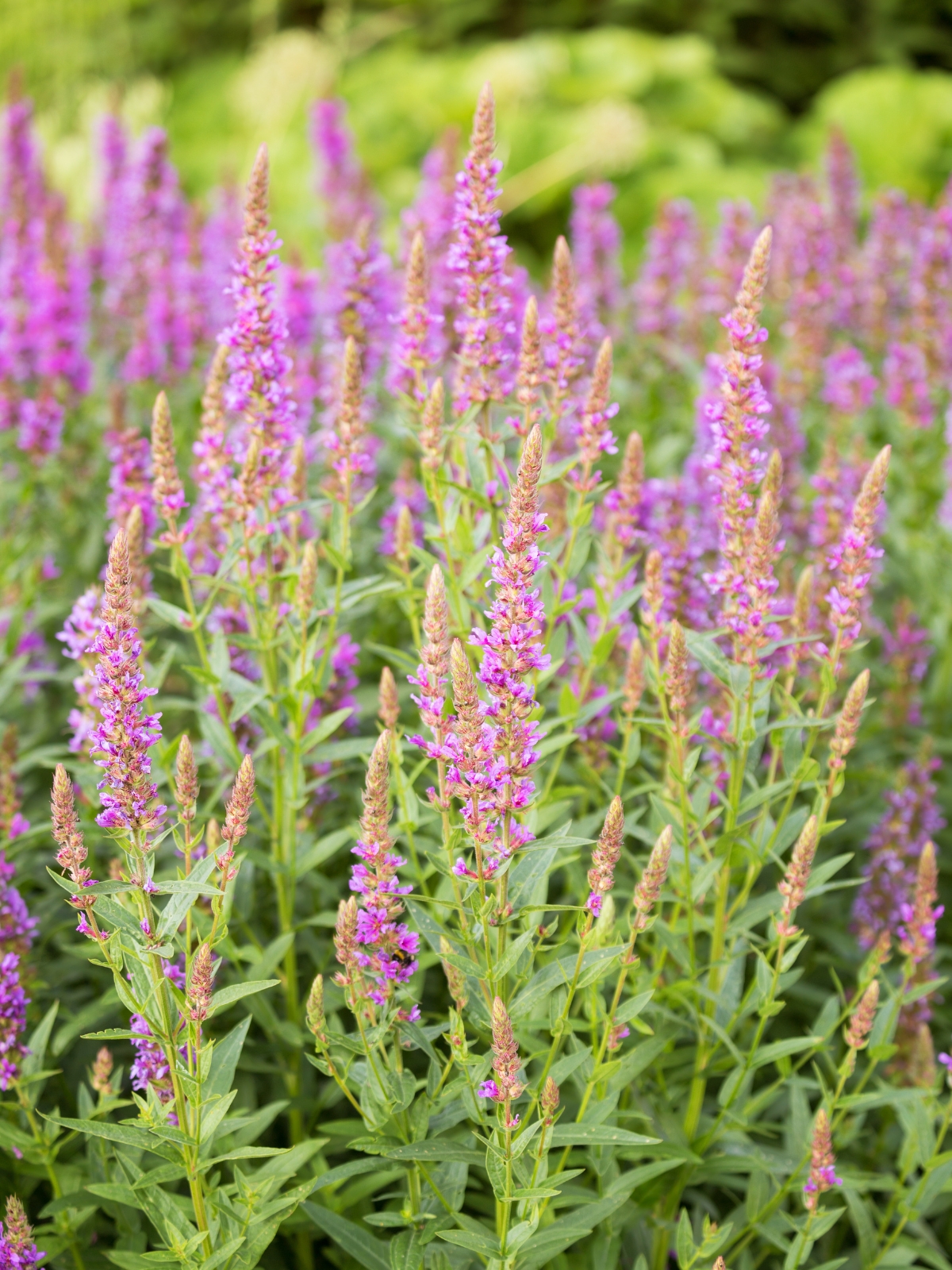
Spotted Knapweed (Centaurea maculosa)
Knapweed is another beautiful purple flower that’s only considered a weed because it spreads so readily. I found it growing in my flower beds, and I spent quite a while trying to figure out the name of this exotic-looking purple flower. I was shocked to learn it wasn’t intentionally planted.
The flowers are edible flowers, but the rest of the plant generally isn’t considered edible.
Here’s how to identify spotted knapweed (Centaurea maculosa).

Violet Wood Sorrel (Oxalis violacea)
There are many species of wood sorrel, and the most common ones have yellow flowers, namely Common Yellow Wood Sorrel (Oxalis stricta). There is, however, a purple flowered variant called Violet Wood Sorrel.
All wood sorrels are edible and delicious. Their leaves have a tangy, lemon-y flavor and they’re used by fancy chefs to create unique dishes (like wood sorrel ice cream).
They sometimes look a bit like clover because of their leaves, but the flowers look really different. They can be pink to purple, depending on the plant.
Here’s how to identify violet wood sorrel species (Oxalis sp.).
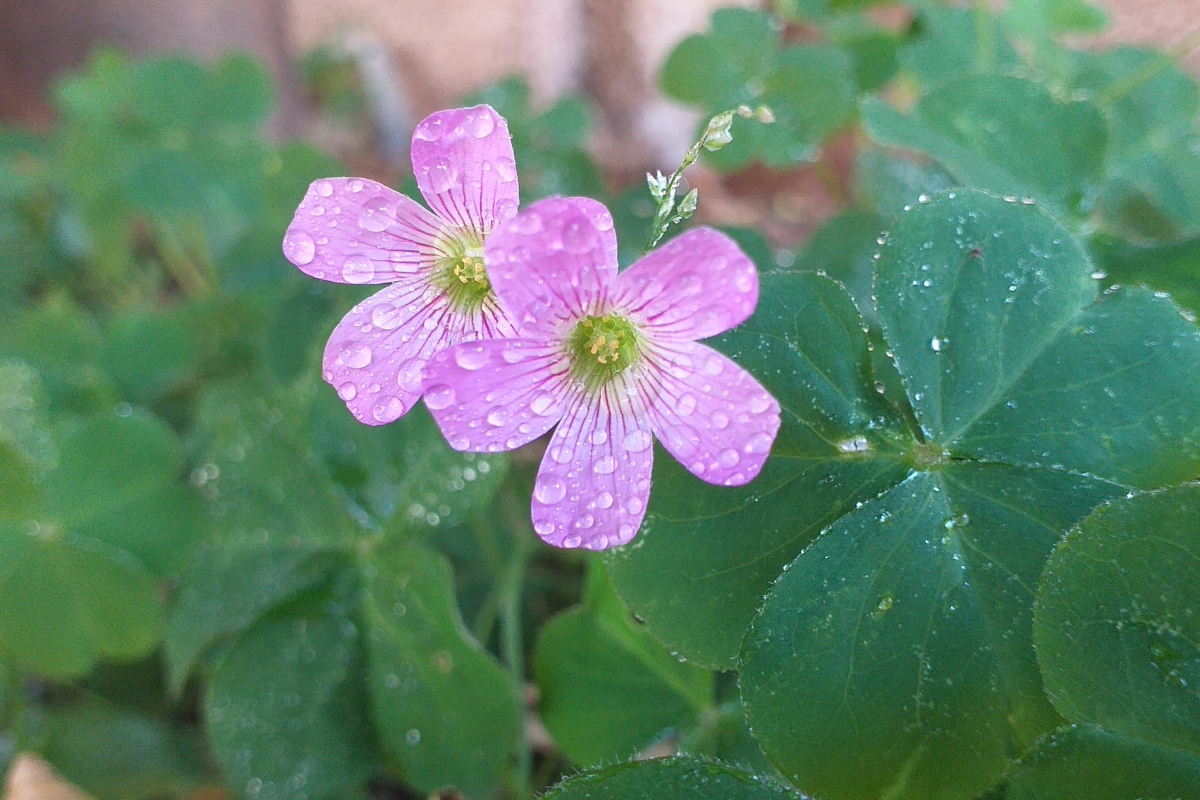
Wild Violet (Viola sp.)
Wild many people absolutely love wild violets; others consider them invasive weeds and hate them as annoying purple flowers on the lawn. Personally, I think they’re beautiful, and they tend to take over moist shady spots anywhere they can, even outcompeting grass and tolerating mowing.
Violet flowers aren’t always “violet,” and they also come in white, and occasionally yellow.
In general, the whole of a wild violet plant is edible and medicinal. The flowers are the most commonly eaten part, and they make a lovely wild violet jelly that tastes an awful lot like blueberries (and has a stunning purple color).
The leaves are the most medicinal part of the plant, and they’re generally used in salves to encourage lymphatic drainage.
Here’s where you can read more about Identifying Wild Violets.
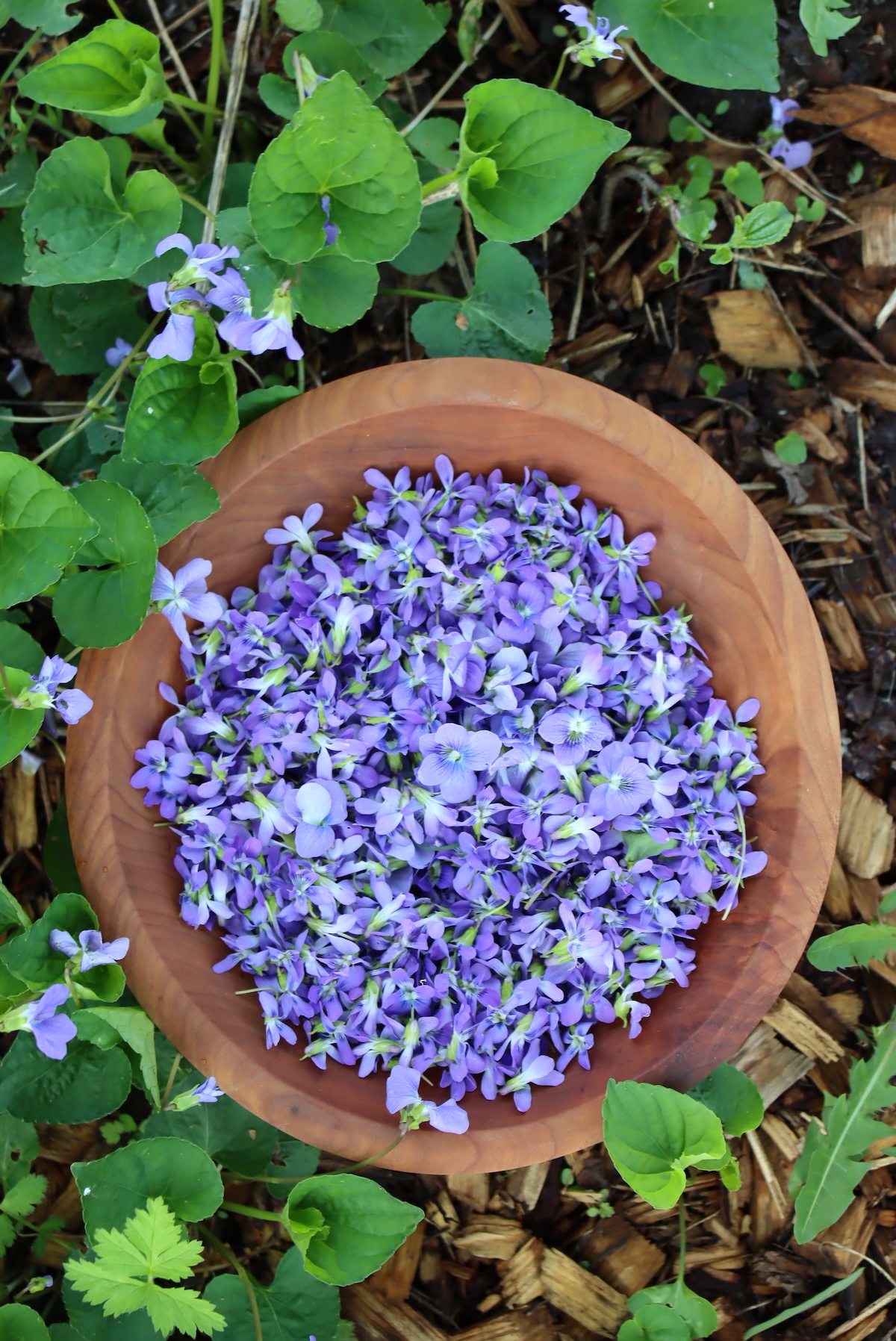
Edible Wild Weeds
Looking for other edible wild weeds?
Foraging Guides
Looking for more edible wild plants to forage?
- Foraging Wild Black Cherry (Prunus serotina)
- Foraging Black Walnuts (Juglans nigra)
- Foraging Fireweed (Rosebay Willowherb)
- Foraging Marsh Marigold (Caltha palustris)
- Foraging Partridgeberry (Mitchella repens)
- Foraging Fiddlehead Ferns
- Foraging Ramps (Wild Leeks)
- Foraging Wild Asparagus
